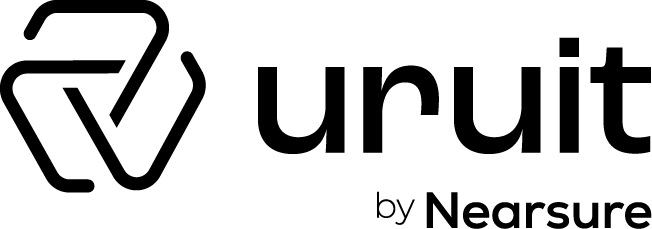Contents
Importance of a Development Partner who Speaks UX
“You’ve got to start with the customer experience and work back toward the technology – not the other way around”. Steve Jobs at the World Wide Developers Conference, May 1997
With the success of products such as the iPhone and the Keurig coffee maker, most people now understand how important User Experience (UX) is for the success or failure of a product. Let’s think about Amazon: it disrupted and reshaped the book publishing business, but didn’t stop there. The multinational was and is wise when it comes to listening and understanding consumers needs and offering them what they want, how they want it. That capacity has allowed them to keep up with the way music is published, purchased and delivered. Soon enough, it became Walmart’s biggest threat in retail. Now, they are challenging the very computing infrastructure underpinning the internet with its AWS business unit.
Amazon did not invent e-commerce, but in a large degree it perfected the user experience concept. They figured out how to gather and use data with the customer, without creeping clients out and scaring them off. The team behind Amazon understood the importance of reducing customer effort and providing an ideal user experience.
Important questions to ask
It doesn’t matter if your application is mobile and/or desktop, if it’s a business or consumer software. In any case, it’s critical that you get the user experience right. It is not enough to simply select a software partner with coding skills; you want to be sure you are choosing a partner that understands the importance of user experience. A partner that has the capability to deliver user centered design. In different occasions, most of us have suffered with very powerful software that was a pain to use because it lacked an intuitive interface, required too many steps to complete simple or repetitive tasks, or was “just plain ugly.”
To avoid this kind of situation with your product, be sure to ask any prospective development partner about these three things as part of your due diligence process.
1 Design Methodology
In the days of mainframes, even in the early days of PC software design, someone in charge of a new software project would write out a grand list of functions. This list would be filled with detailed instructions on how every screen would work. It would contain every user input and output, all possible parameters. Once the list was ready, this person would submit these grand plans to the software programmers. It was much like an architect designing the blueprints for an entire building before the first shovel was stuck into the ground. This traditional method is called the “waterfall methodology.”
In his book “The Lean Startup,” Eric Ries discusses the problems with applying this traditional methodology in design. He talks about the case of Intuit, the maker of the popular Quickbooks accounting software: in the past, they would release the new version of their software, take a breath, and then start working on next year’s version. Customer feedback went into a file and, while not ignored, it was looked at in very few occasions. Design was a process leading up to a major event that happened once a year. In the case of other companies, even less.
The change
Intuit reinvented their design process by applying Agile methodologies not just in the development phase, but in design as well. They started listening closely and constantly to customer feedback and brought those customers into the design process, asking them for their opinion on a constant basis. With their input, and using A/B testing, they presented different user interfaces to small subsets of customers. When this small part of the general design was ready for release, it wasn’t hold back until next year’s major release date, it was rolled out as an upgrade. Basically, they realized that software is in a constant state of design and improvement, rather than a giant, disruptive retooling.
In modern software applications, the Agile methodology is usually the ideal option for the design-develop-measure iterative loop. This methodology provides flexibility in design and faster deployment. The customer may notice things or identify changes and modifications that the app needs before you do. For someone used to the traditional method, this may seem to slow down the process. However, it is in fact far quicker and less expensive than rolling out a defective product and then going back and trying to correct easily preventable problems. So, is your development partner Agile?
2 Testing Methodology
It is one thing to design bug free software that meets all the functional requirements laid out by the design documents and the scope of work. But is it easy to use? Will users want to use it? A great application is much more than bug free software. Actually, it is software that works the way users think—actions should require barely more effort than thinking about them.
To accomplish this, testing is essential. What processes and procedures does your potential development partner have in place to allow you to test your application’s usability every step of the process? Do they feel that this is essential for the project’s success, or do they see it as an unnecessary intrusion? Once an application is deployed, usability metrics are important. There are ways to harvest this data either internally within the application itself, or using external tools. Some examples are: analytics tools, satisfaction surveys and even heat map analysis to measure customer reaction, behavior and sentiment.
3 Proven Experience
This is not the time for a software development firm to give themselves “on the job training” at your expense! Selecting someone with the coding skills is a given. But look carefully at the products that the potential software partner has created in the past. In fact, don’t just look at them, use apps they have created and check out their look and feel. Soon, you will be asking yourself: are these apps easy and intuitive to use?
Do keep in mind that software companies have to follow their clients requirements and desires. Therefore, don’t rush to judgment without asking questions about why things were done the way they were. Your prospective software partner should be able to provide numerous success stories that use technologies and techniques that relate to your own business needs.
In our experience, with these answers you can start a win-win partnership with the software company that best meets your needs. If you are curious about our experience with UX and how important it is to us, please visit our blog post “User experience design saves you time and money”, or send us your questions!



